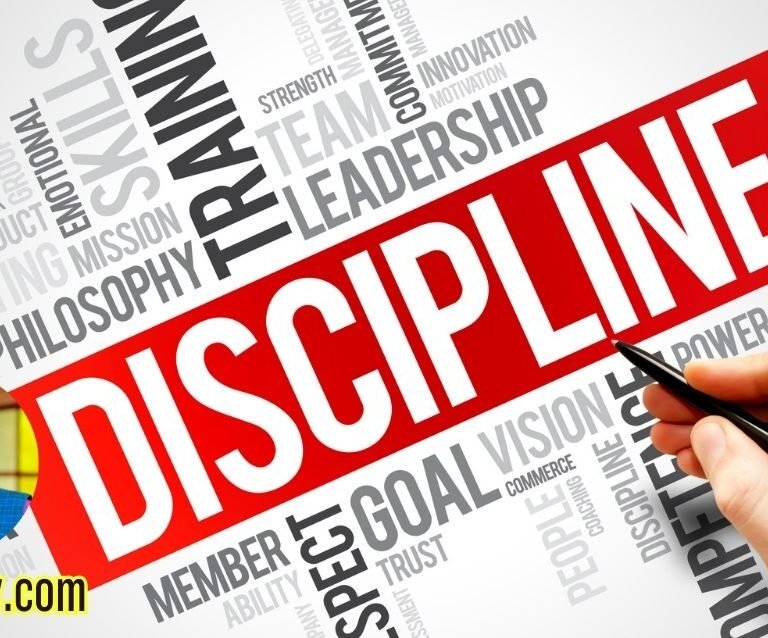Letting Go
The journey of personal development often involves the essential and transformative practice of letting go. This concept encompasses the release of emotional, psychological, and sometimes physical attachments that no longer contribute positively to our lives. Holding onto these burdens, whether they are outdated beliefs, difficult relationships, or past experiences, can significantly hinder our growth and impede our ability to embrace new opportunities. To understand the implications of this process, it is crucial to explore the emotional and psychological impacts tied to clinging to what no longer serves us.
Emotionally, holding onto past hurts or negative patterns can lead to a recurring cycle of stress, anxiety, and self-doubt. Individuals may find themselves trapped in a loop, constantly revisiting old grievances and dwelling on unproductive thoughts. This behavior not only drains emotional energy but also inhibits the potential for positive change. Psychologically, the inability to release these attachments can create a barrier to self-discovery and self-acceptance, leading to stagnation in one’s personal and professional life.
Letting go, therefore, becomes a pivotal step toward fostering resilience and paving the way for new beginnings. When we choose to release what does not serve us, we open ourselves up to new experiences and relationships that align with our evolving self. This act of release allows for a cleansing of emotional spaces, permitting growth, renewal, and a fresh perspective on life. As we navigate the journey of self-improvement, understanding the importance of letting go can profoundly impact our overall well-being and facilitate the emergence of new opportunities.
Identifying What No Longer Serves You
Recognizing the elements in our lives that hinder our growth is a crucial step towards achieving new beginnings. To facilitate this introspection, one may start by examining various aspects such as relationships, habits, beliefs, and material possessions. Each of these areas can significantly impact our well-being and sense of fulfillment.
When reflecting on relationships, consider the people you interact with regularly. Are these relationships supportive and uplifting, or do they drain your energy and diminish your self-worth? Journaling about your interactions and feelings can provide clarity. It is essential to acknowledge whether certain relationships are helping you thrive or if they perpetuate negative patterns in your life.
Alongside relationships, habits also play a pivotal role in our personal development. Identify any routines that may contribute to stagnation. For instance, do you often find yourself engaging in procrastination or consuming unhealthy foods? Keeping a log of your daily activities can reveal behavioral patterns that may be serving as obstacles to your growth.
Furthermore, examine your beliefs and mindset. Many of us operate on limiting beliefs that have been ingrained over time, often unconsciously. Questions such as, “What fears hold me back?” or, “Do I believe I deserve happiness?” can illuminate these mental barriers. Recognizing and challenging these beliefs can be an empowering exercise.
Lastly, consider your material possessions. Clutter can significantly affect mental clarity and emotional balance. Take stock of items that have outlived their usefulness, whether they are clothes, decor, or gadgets. Adopting a minimalist approach can free up physical and mental space, allowing for new opportunities to emerge.
Implementing these reflective exercises can guide you in destining what no longer serves you, thereby fostering a more positive environment for transformation and personal growth.
The Emotional Impact of Letting Go
Letting go is an intrinsic component of personal growth and development, yet it is frequently accompanied by a spectrum of emotional challenges. The process of releasing what no longer serves you—whether that be relationships, habits, or beliefs—can evoke profound feelings of fear, loss, and anxiety. These emotions often stem from the uncertainty that arises with change. Individuals may feel apprehensive about the future when they consider loosening their grip on familiar aspects of their lives. The fear of the unknown can create a resistance to letting go, as people are naturally inclined to seek comfort and stability.
Furthermore, the sensation of loss—whether it be the end of a meaningful relationship or the relinquishment of a long-held dream—can elevate feelings of grief. This grief may be experienced as a deep sorrow or a yearning for what once was. It is essential to acknowledge that this response is entirely normal and signifies the emotional depth of the experiences we engage with. The process of giving up something significant often has implications beyond the individual; it can influence social dynamics and personal identity, which in turn heightens anxiety.
However, recognizing and allowing oneself to feel these emotions is a crucial step in the healing process. Suppressing feelings of fear, loss, or anxiety may lead to emotional stagnation, making it more difficult to move forward. Instead, embracing these emotions as part of the human experience can foster resilience. Seeking support through conversation or professional guidance can further facilitate this journey, offering perspectives that ease the emotional weight associated with the act of letting go. Understanding and validating one’s emotions creates a pathway toward new beginnings, ultimately positioning individuals to embrace the potential that lies ahead.
Benefits of Releasing and Letting Go
Releasing burdensome thoughts, negative experiences, or obsolete possessions can lead to profound benefits that enhance an individual’s emotional state and overall well-being. One of the most significant advantages of letting go is emotional freedom. By eliminating what no longer serves a positive purpose in one’s life, individuals often experience a sense of relief, liberation, and rejuvenation. This emotional lightness allows for a more authentic self-expression and a renewed perspective on life, ultimately fostering resilience against future challenges.
Furthermore, letting go can provide clarity of purpose. When distractions and non-essential attachments are removed, individuals can focus on their core goals and values more clearly. This sense of clarity invigorates decision-making processes and prioritization, enabling a stronger alignment with life ambitions. People who engage in practices aimed at releasing old habits and thoughts often report a more profound understanding of their true desires and aspirations, setting them on a more intentional path.
Moreover, the act of releasing can significantly enhance creativity. An uncluttered mind is more open to new ideas, fostering innovative thinking and problem-solving. Creative individuals, such as artists and entrepreneurs, often find that letting go of past failures or limiting beliefs fuels their inspiration, allowing them to explore uncharted territories in their work. A real-life example includes a writer who, after discarding their previous works that weighed them down, found a new voice and produced a bestselling novel.
Finally, letting go opens the door to new opportunities. By making space for what truly matters, individuals can attract positive experiences and relationships that align with their renewed outlook. Numerous testimonials demonstrate that those who embrace the process of releasing often encounter unexpected serendipities in their journeys, illustrating that sometimes, loss makes room for rewarding gains.
Practical Strategies for Letting Go
Letting go of what no longer serves you can be a transformative process, and implementing practical strategies can facilitate this journey. One effective approach is mindfulness, which encourages you to become aware of your thoughts, feelings, and bodily sensations in the present moment. Engaging in mindfulness practices, such as meditation or deep-breathing exercises, allows you to recognize what might be holding you back without judgment. This heightened awareness empowers you to make intentional decisions about what to release from your life.
Another invaluable strategy is journaling. Writing down your thoughts can serve as a cathartic outlet, helping you articulate what you want to let go of. Begin by setting aside a few minutes each day to reflect on what no longer serves you emotionally or physically. You can create prompts, such as “What habits hinder my growth?” or “Which relationships drain my energy?” When you write these responses down, you establish a clearer understanding of your desires and the changes you seek, thereby allowing emotions to surface and dissipate.
Physical decluttering is another powerful tactic for letting go. Start with a specific area in your home or workspace. Categorize items into “keep,” “donate,” and “discard” piles. As you physically remove objects that no longer resonate with your life or aspirations, you create tangible space for new opportunities. This process also reinforces the mindset of letting go; freeing your physical environment can invigorate your mental state as well. By regularly engaging in these strategies—mindfulness, journaling, and decluttering—you will cultivate a more liberated perspective and create space for new beginnings.
Creating Space for New Beginnings
After letting go of what no longer serves you, the next crucial step is to actively create space for new beginnings. This process starts with setting clear intentions. Intentions provide direction and purpose, clarifying what you want to manifest in your life. To begin, take a moment to reflect on your aspirations and goals. Write them down and visualize the life you wish to lead. This intentional focus acts as a guiding light as you navigate the changes ahead.
Embracing change is another essential element in creating space for new opportunities. Change can often feel intimidating, but it is vital to recognize that it can also foster growth and transformation. Approach this inevitability with a willingness to adapt and a mindset that views challenges as chances to learn. By engaging with change positively, you open yourself to experiences that can significantly enrich your life.
Acknowledging and fostering an open mindset is integral to welcome new possibilities. An open mindset encourages curiosity and resilience, allowing you to explore different outcomes without judgment. Engage in practices that promote flexibility, such as mindfulness and self-reflection, to help you remain adaptable. Surrounding yourself with supportive individuals who encourage your growth can also significantly contribute to maintaining this open perspective.
Finally, to maintain this newly created space for the long term, regularly assess and reassess your environment and intentions. Create routines that allow you to engage consistently with your goals. Establishing habits such as journaling, meditation, or goal-setting can reinforce your commitment to growth. By systematically nurturing this space, you will not only welcome new experiences but also cultivate a life that aligns with your true aspirations.
The Role of Community and Support in Letting Go
Letting go of what no longer serves us is often a complex journey that requires not only personal introspection but also the mobilization of social support. The influence of community—whether it be friends, family, or broader social networks—can significantly enhance an individual’s ability to navigate this transformative process. Supportive relationships offer emotional backing, practical advice, and diverse perspectives that can illuminate paths forward, making it easier to release burdens that impede personal growth.
Friends and family play a crucial role in offering encouragement and reassurance. They can serve as sounding boards, allowing individuals to voice their feelings about what they wish to let go. This open dialogue can facilitate deeper understanding and validation of emotions, making the act of letting go less isolating. Moreover, the empathetic listening and non-judgmental responses from loved ones reinforce an individual’s sense of belonging, which is essential during times of transition.
Beyond immediate circles, community resources such as support groups or professional therapy can provide additional layers of support. These forums enable individuals to connect with others who share similar experiences or struggles, enhancing feelings of solidarity. Participation in such groups fosters an environment of mutual understanding and collective healing. Additionally, therapists and counselors can offer tailored strategies and coping mechanisms that aid in the letting-go process. As trained professionals, they can provide insights that are difficult to access independently.
In essence, cultivating a robust support network is integral to the journey of letting go. Engaging with communities and utilizing resources can make the challenges of relinquishing the past more manageable, empowering individuals to step into new beginnings with confidence and resilience. It emphasizes that one need not navigate this pathway alone, and that together, we can facilitate healing and growth.
Personal Growth Through the Process
The journey of personal growth often involves a significant process of letting go. Releasing old habits, relationships, and beliefs that no longer serve us is not merely a necessary step; it is a transformative experience that can lead to profound self-discovery and empowerment. By practicing the art of letting go, individuals open themselves up to new opportunities and experiences, paving the way for personal transformation.
When individuals engage in the process of relinquishing what hinders their progress, they create space for new beginnings. This process might include evaluating personal and professional relationships, reassessing career paths, or confronting limiting beliefs ingrained over years. Such self-reflection encourages deeper awareness of one’s values and desires, enabling individuals to align their actions with their true selves. In turn, this alignment fosters healthier, thriving environments where personal growth can flourish.
Moreover, letting go is often associated with emotional healing. By working through unresolved issues and releasing emotional baggage, individuals can cultivate a healthier mindset. This newfound clarity can result in improved mental wellness, characterized by reduced anxiety and heightened resilience to stressors. Mental clarity gained through this practice empowers individuals to embrace change confidently and positively.
The journey of letting go, while frequently challenging, ultimately leads to a heightened sense of self-awareness and personal empowerment. Embracing this journey facilitates transformative growth, where the act of releasing outdated aspects of life translates to welcoming growth opportunities. By adopting this mindset, individuals not only break free from stagnation but also foster a continuous cycle of personal development that brings forth new beginnings and enhances overall well-being.
Your New Beginning
In exploring the process of letting go, it becomes evident that this practice is not merely an act of relinquishing the past; rather, it is a pathway to self-discovery and personal growth. As discussed, the essence of creating space for new beginnings involves recognizing what no longer serves us and making the conscious decision to release it. This process, while often challenging, opens doors to new opportunities, relationships, and experiences that enrich our lives. Embracing the act of letting go can significantly enhance our well-being, allowing us to focus on what truly matters.
Throughout the blog post, we have highlighted the importance of identifying limiting beliefs, unattainable goals, and toxic relationships that hinder our progress. By actively working to eliminate these elements from our lives, we create an environment that fosters healing and transformation. Each small step taken towards releasing these burdens contributes to a more authentic and fulfilling existence. Moreover, the notion of letting go is intricately linked to the ability to embrace change, which is an essential component of personal development.
As you reflect on your journey, consider the areas in your life that might benefit from a fresh start. Challenge yourself to assess what holds you back and contemplate actionable steps towards letting it go. The process is indeed personal and requires introspection, but the outcome—embracing a new beginning—is undoubtedly rewarding. Remember, the power to transform your life lies in your hands, and by intentionally releasing what no longer serves you, you pave the way for a brighter, more meaningful future. Ultimately, your new beginning awaits. Take the leap, and embrace the possibilities that lie ahead.









